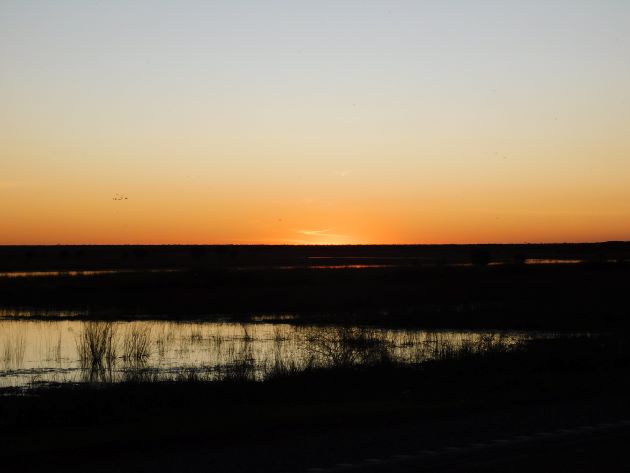
The floodwaters continue to recede across the plains near Broome and the bird-life continues to enjoy the environment. The whole area has been a breeding ground for many species and depending on the time of day you can expect a wide variety of species. Sunset is currently around 5.20pm, but does not vary much throughout the year here in Broome. There is still not a lot of traffic compared to some places and most people plan to not drive late into the day. The highways are mostly open now with a few detours, but some of the National Parks remain closed this year after the floods.
Being out on the highway as the sun goes down offers more relaxed birds nipping back and forth across the highway. They appear to be aware of the lack of traffic and we have observed Buff-banded Rails and Australian Spotted Crakes running back and forth across the highway at dusk. The last of the daylight appears to trigger some bird species to make a move to a new location.
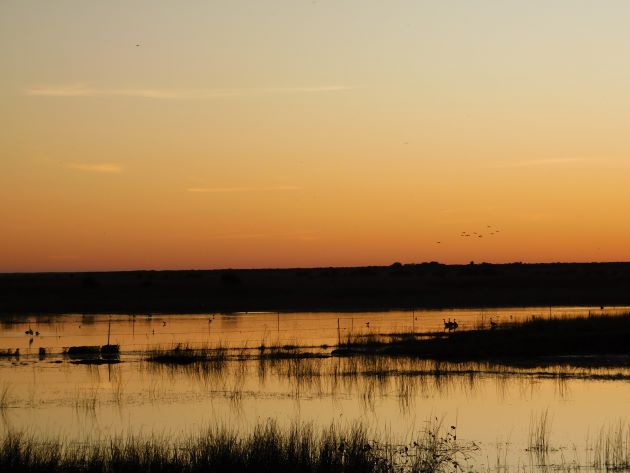
Birds on the move after sunset
The numbers of Glossy Ibis continue to increase right beside the highway and they have no doubt bred in the area over recent months.
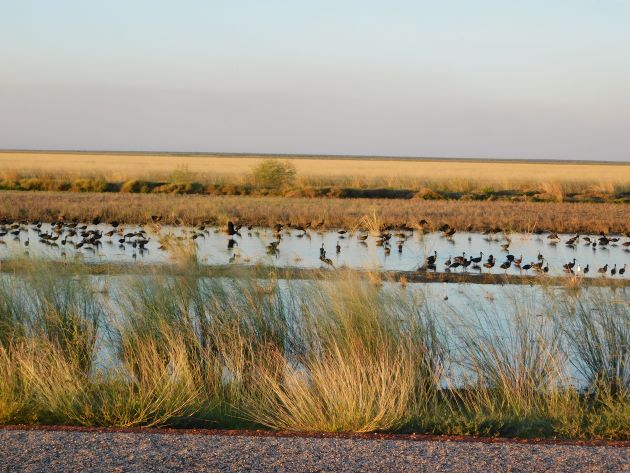
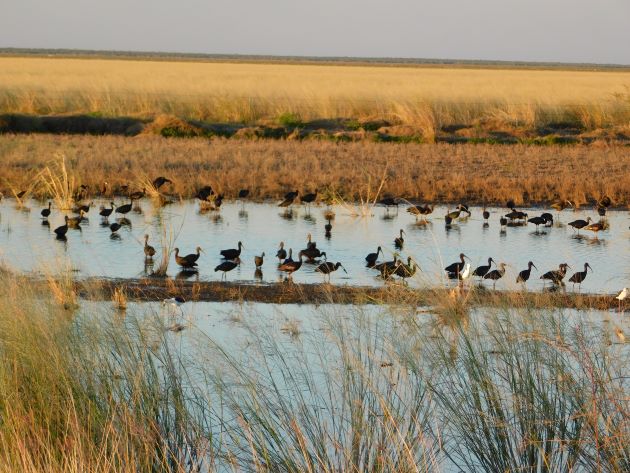
Glossy Ibis beside the highway
The numbers of Australasian Swamphen have continued to grow. We were only seeing a couple of families a few weeks ago and now they appear to be everywhere you look. On dusk they were a lot more active, but also moved away from the highway when trucks roared by. There are plenty of grassy clumps that they can hide amongst and then bolt between.
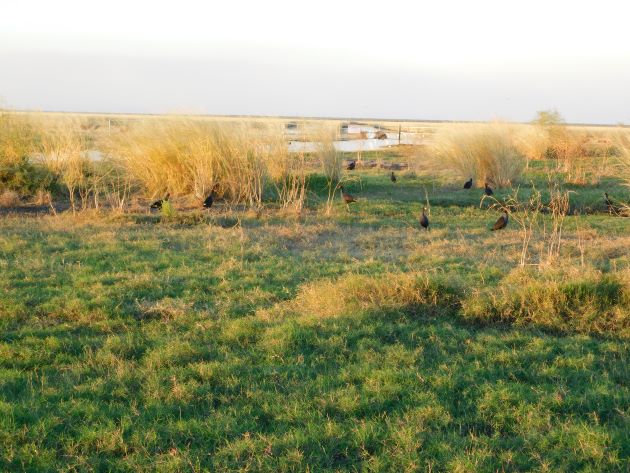
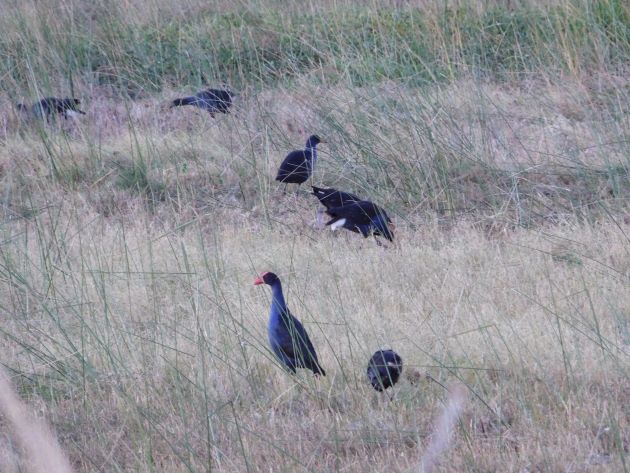
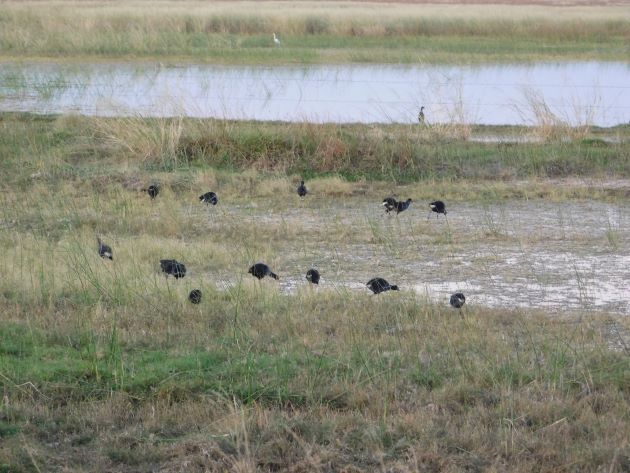
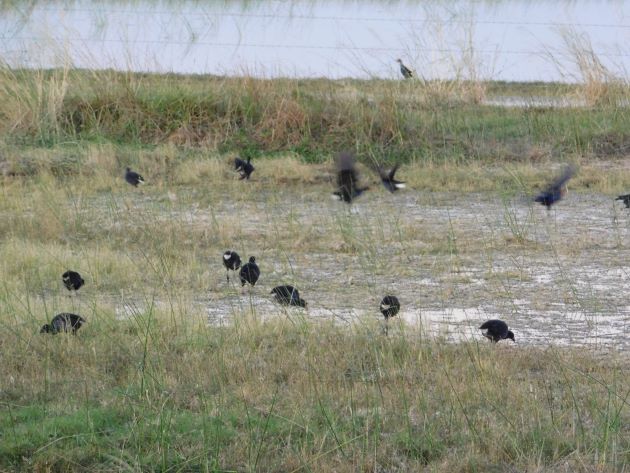
Australasian Swamphens beside the highway
The numbers of Magpie Geese have also continued to grow every week and there have been plenty right beside the highway. The Magpie Geese present are all of varying ages and sizes and they will continue to move around as the floodwaters recede. We can expect them all to leave the area and return to the environment further north than Broome in coming months.
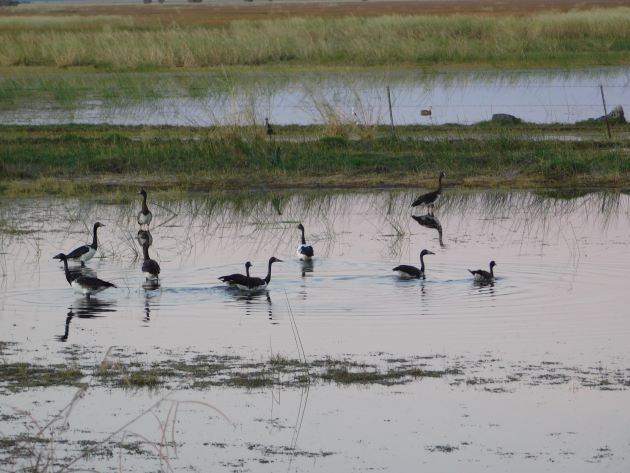
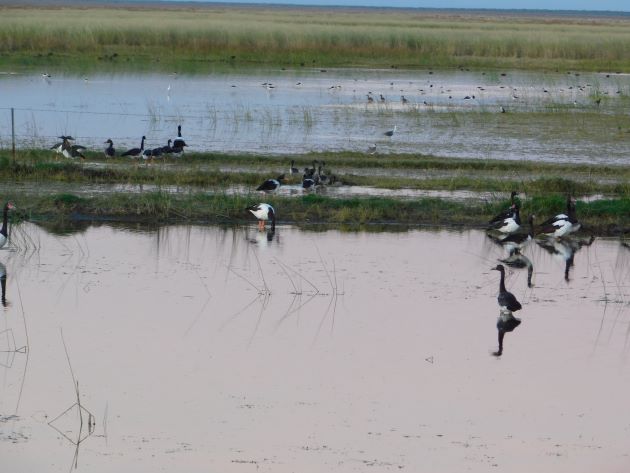
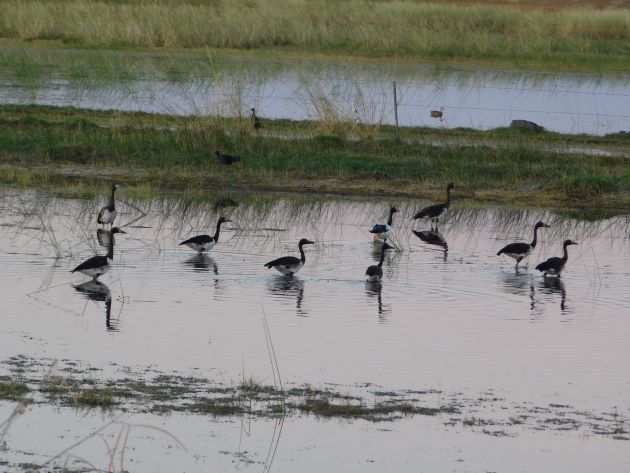
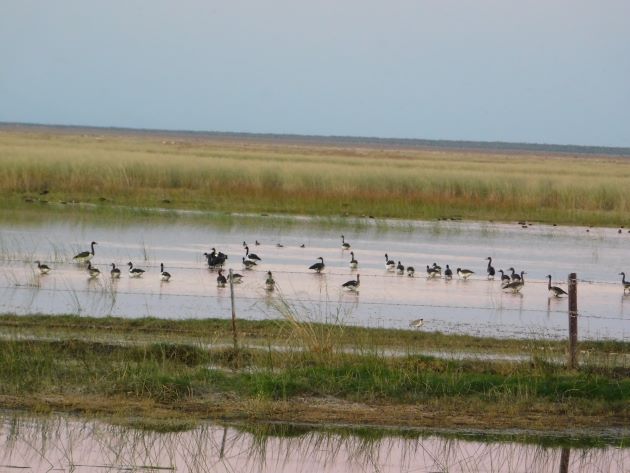
Magpie Geese beside the highway
The flooded tracks from the highway to the station gates are still popular with the Black-winged Stilts and the Pied Herons and as the daylight fades you start to notice all of the insects. The water surface looks like it is raining, but it is all of the insects that are landing on the surface.
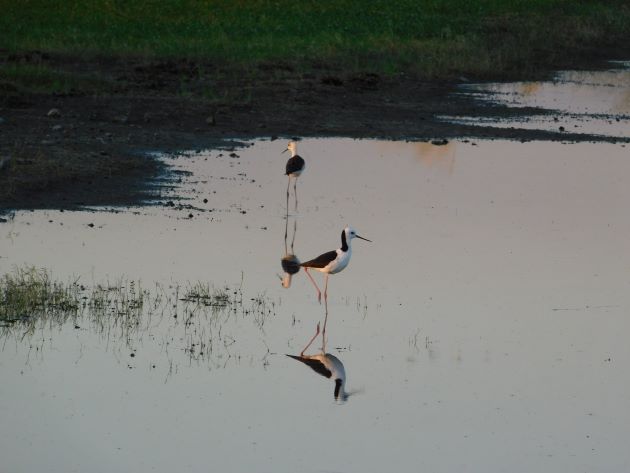
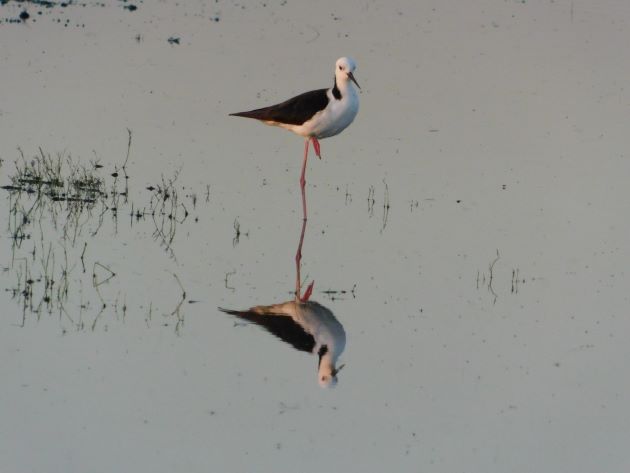
Black-winged Stilts and insects on the water surface
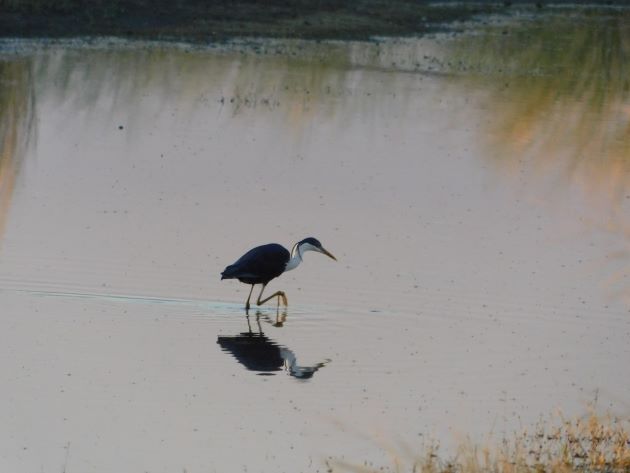
Pied Heron and insects on the water surface
There are still large numbers of ducks lining the reeds that have grown over recent months and also Australasian Grebes. Although the land looks lush after all of the rain during our wet season months it will continue to dry out and it won’t be long before it becomes a dust bowl once again.
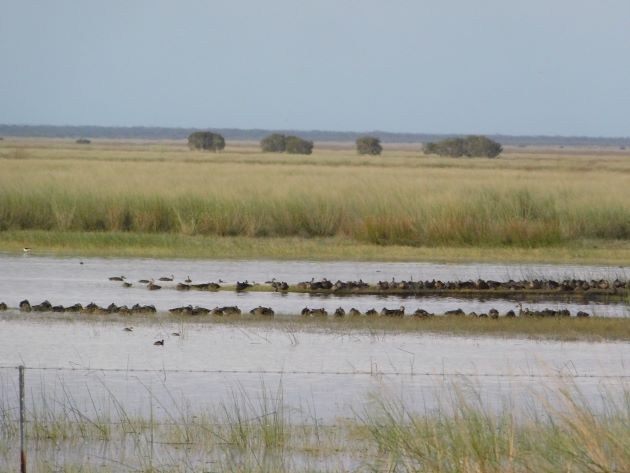
Ducks beside the highway
We soon realised just how many insects there were when we moved off after watching the sun set and the birds became more active. It didn’t take long for the whole windscreen and the back of the wing mirrors to be coated in insects. There is clearly plenty of food for all of the many species to be found across the flooded landscape at the moment.













It’s wonderful to know insects are so plentiful for your amazing numbers of species and birds overall! In too many parts of the world they’ve been decimated with pesticides. Many of us remember our windshields being coated with insects after a drive when we were little, and that doesn’t happen anymore.
Yes, we don’t mind the insects being there and being part of the natural food chain!
Scarlet Ibis is bird Trinidad & Tobago.